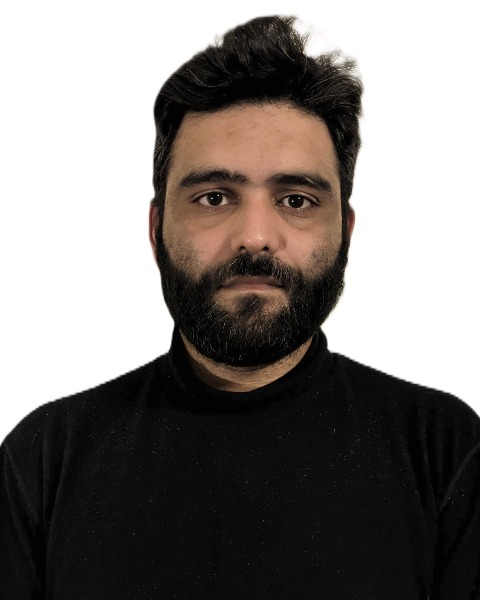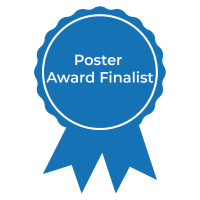Bones, Cartilage & Teeth Posters
Poster: Bones, Cartilage & Teeth Posters
19 - Colocalisation of Collagen Fibre Type-i/-ii at the Osteochondral Cement Line: A Potential Bonding Mechanism
Monday, March 25, 2024
10:15am - 12:15pm US EDT
Location: Sheraton Hall
Poster Board Number: 19
There are separate poster presentation times for odd and even posters.
Odd poster #s – first hour
Even poster #s – second hour
Co-authors:
There are separate poster presentation times for odd and even posters.
Odd poster #s – first hour
Even poster #s – second hour
Co-authors:
Kingston King-Lun Mak - Associate Professor, Department of Biomedical Sciences, City University of Hong Kong; Michael Doube - Clinical Associate Professor, Department of Infectious Diseases and Public Health, City University of Hong Kong

Khizar HAYAT, Masters in Anatomy and Histology
PhD Candidate
City University of Hong Kong
Hong Kong, Hong Kong
Presenting Author(s)
Abstract Body : Introduction:
The osteochondral cement line (OCL), between the articular calcified cartilage (ACC) and subchondral bone (SCB), is a complex 3D structure with distinct morphology and composition. The primary collagenous component of SCB is type-I (Col-I), and ACC type-II (Col-II). The contribution of collagens to OCL bonding is not well understood and is outright rejected by some researchers. We aimed to identify Col-I and -II within OCL and determine whether there is an overlap between them that could provide a mechanism of fibrillar bonding between cartilage and bone.
Methods:
Osteochondral samples were collected from bovine (n=2) and equine (n=2) proximal metatarsal condyles and patellae, demineralised in 10% formic acid and paraffin embedded. Four consecutive sections per sample were mounted per slide: 3 controls (no label, Col-I only, Col-II only) and one full experiment (Col-I + Col-II). Sections were labeled with primary antibodies against Col-I or Col-II (PA1-26024, PA1-86055) and fluorescent secondary antibodies (A32790:A488, A21207:A594), mounted in Prolong Diamond under a high-precision cover glass and imaged with a point scanning confocal microscope (Nikon A1-R HD25-Eclipse Ti2-E; CFI Plan Apochromat DM Lambda 100×/1.45 oil objective). Pixel spacing was optimized for Nyquist sampling using a 1.2 Airy pinhole diameter. Images were deconvolved and colocalisation analyzed with the Fiji plugins JaCoP and DiAna.
Results:
OCL contains fibrils that label positively for Col-I or Col-II, which enmesh through a depth of up to 5 µm in equine samples, forming a two-phase felt-work. Col-I/-II enmeshing was much less obvious in bovine samples. Up to 0.35 µm3 of colocalisation between neighboring Col-I/-II fibrils in each place of the optical section was observed. Bovine patella contained distinct regions of OCL debonding with Col-I and -II on both sides of the failure zone.
Conclusion:
We show that Col-I and -II interact across OCL in all sites studied. Osteochondral cement lines are not uniform in composition or morphology, with bovine patella unique in our sample by containing debonded regions. Colocalisation of Col-I and -II in OCL raises the possibility of covalent bonding between ACC and SCB extracellular matrices, or Col-I/-II heterofibril formation. More Col-I/ -II overlapping is observed in equine than bovine tissue, which might relate to horses’ need to resist greater biomechanical forces.
Significance:
Previously under-appreciated site- and species-specific collagenous interactions exist at the osteochondral junction, which may be an important source of osteochondral bonding between SCB and ACC. This species and site-dependent phenomenon highlights the need for further studies to assess fibrillar bonding quantitatively and biochemically at OCL.
The osteochondral cement line (OCL), between the articular calcified cartilage (ACC) and subchondral bone (SCB), is a complex 3D structure with distinct morphology and composition. The primary collagenous component of SCB is type-I (Col-I), and ACC type-II (Col-II). The contribution of collagens to OCL bonding is not well understood and is outright rejected by some researchers. We aimed to identify Col-I and -II within OCL and determine whether there is an overlap between them that could provide a mechanism of fibrillar bonding between cartilage and bone.
Methods:
Osteochondral samples were collected from bovine (n=2) and equine (n=2) proximal metatarsal condyles and patellae, demineralised in 10% formic acid and paraffin embedded. Four consecutive sections per sample were mounted per slide: 3 controls (no label, Col-I only, Col-II only) and one full experiment (Col-I + Col-II). Sections were labeled with primary antibodies against Col-I or Col-II (PA1-26024, PA1-86055) and fluorescent secondary antibodies (A32790:A488, A21207:A594), mounted in Prolong Diamond under a high-precision cover glass and imaged with a point scanning confocal microscope (Nikon A1-R HD25-Eclipse Ti2-E; CFI Plan Apochromat DM Lambda 100×/1.45 oil objective). Pixel spacing was optimized for Nyquist sampling using a 1.2 Airy pinhole diameter. Images were deconvolved and colocalisation analyzed with the Fiji plugins JaCoP and DiAna.
Results:
OCL contains fibrils that label positively for Col-I or Col-II, which enmesh through a depth of up to 5 µm in equine samples, forming a two-phase felt-work. Col-I/-II enmeshing was much less obvious in bovine samples. Up to 0.35 µm3 of colocalisation between neighboring Col-I/-II fibrils in each place of the optical section was observed. Bovine patella contained distinct regions of OCL debonding with Col-I and -II on both sides of the failure zone.
Conclusion:
We show that Col-I and -II interact across OCL in all sites studied. Osteochondral cement lines are not uniform in composition or morphology, with bovine patella unique in our sample by containing debonded regions. Colocalisation of Col-I and -II in OCL raises the possibility of covalent bonding between ACC and SCB extracellular matrices, or Col-I/-II heterofibril formation. More Col-I/ -II overlapping is observed in equine than bovine tissue, which might relate to horses’ need to resist greater biomechanical forces.
Significance:
Previously under-appreciated site- and species-specific collagenous interactions exist at the osteochondral junction, which may be an important source of osteochondral bonding between SCB and ACC. This species and site-dependent phenomenon highlights the need for further studies to assess fibrillar bonding quantitatively and biochemically at OCL.


